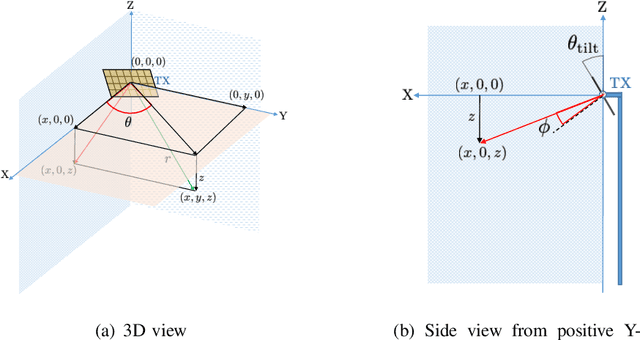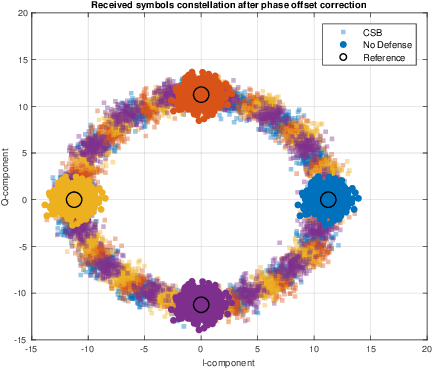Kartik Patel
Next-Generation Backscatter Networks for Integrated Communications and RF Sensing
Sep 16, 2025Abstract:This paper provides a comprehensive analysis and theoretical foundation for next-generation backscatter networks that move beyond communication and integrate RF location sensing capabilities. An end-to-end system model for wideband OFDM backscatter systems is derived, including detailed characterization of propagation channels, receiver chain impairments, RF tag operation, and unsynchronized network nodes. The theoretical system model is validated through experimental evaluation using actual hardware, demonstrating the detailed model's accuracy. A practical bistatic ranging method that can operate with unsynchronized nodes is presented, along with the Cram\'er-Rao Lower Bound (CRLB) derived to show the achievable performance limits. Our experimental results demonstrate the system performance for communication, RF sensing, and ranging, while also benchmarking against the derived theoretical limits. This analytical framework and experimental validation establish fundamental understanding of distributed, unsynchronized backscatter systems for future machine-type communication networks that are deployed in massive scale, while remaining energy-efficient.
Harnessing Multimodal Sensing for Multi-user Beamforming in mmWave Systems
Jun 07, 2024Abstract:Sensor-aided beamforming reduces the overheads associated with beam training in millimeter-wave (mmWave) multi-input-multi-output (MIMO) communication systems. Most prior work, though, neglects the challenges associated with establishing multi-user (MU) communication links in mmWave MIMO systems. In this paper, we propose a new framework for sensor-aided beam training in MU mmWave MIMO system. We leverage the beamspace representation of the channel that contains only the angles-of-departure (AoDs) of the channel's significant multipath components. We show that a deep neural network (DNN)-based multimodal sensor fusion framework can estimate the beamspace representation of the channel using sensor data. To aid the DNN training, we introduce a novel supervised soft-contrastive loss (SSCL) function that leverages the inherent similarity between channels to extract similar features from the sensor data for similar channels. Finally, we design an MU beamforming strategy that uses the estimated beamspaces of the channels to select analog precoders for all users in a way that prevents transmission to multiple users over the same directions. Compared to the baseline, our approach achieves more than 4$\times$ improvement in the median sum-spectral efficiency (SE) at 42 dBm equivalent isotropic radiated power (EIRP) with 4 active users. This demonstrates that sensor data can provide more channel information than previously explored, with significant implications for machine learning (ML)-based communication and sensing systems.
Circulant Shift-based Beamforming for Secure Communication with Low-resolution Phased Arrays
Aug 10, 2021



Abstract:Millimeter wave (mmWave) technology can achieve high-speed communication due to the large available spectrum. Furthermore, the use of directional beams in mmWave system provides a natural defense against physical layer security attacks. In practice, however, the beams are imperfect due to mmWave hardware limitations such as the low-resolution of the phase shifters. These imperfections in the beam pattern introduce an energy leakage that can be exploited by an eavesdropper. To defend against such eavesdropping attacks, we propose a directional modulation-based defense technique where the transmitter applies random circulant shifts of a beamformer. We show that the use of random circulant shifts together with appropriate phase adjustment induces artificial phase noise (APN) in the directions different from that of the target receiver. Our method corrupts the phase at the eavesdropper without affecting the communication link of the target receiver. We also experimentally verify the APN induced due to circulant shifts, using channel measurements from a 2-bit mmWave phased array testbed. Using simulations, we study the performance of the proposed defense technique against a greedy eavesdropping strategy in a vehicle-to-infrastructure scenario. The proposed technique achieves better defense than the antenna subset modulation, without compromising on the communication link with the target receiver.
 Add to Chrome
Add to Chrome Add to Firefox
Add to Firefox Add to Edge
Add to Edge